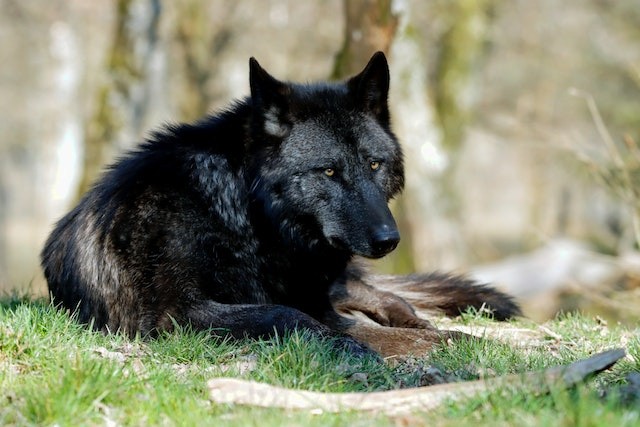According to new research, black wolves seem to be more likely to withstand canine distemper virus outbreaks (CDV).
To improve the fitness of their offspring, Yellowstone Natural Park wolves prefer to mate with animals of the opposite color in areas where CDV outbreaks occur.
CDV outbreaks may demonstrate why black wolves are becoming more common in North America's south.
Canine Distemper Virus

Canine distemper is an extremely infectious paramyxovirus-caused disease. It is a widespread disease that affects both wild and domestic carnivores, primarily raccoons, grey foxes, and skunks in the spring and fall, as per CornellWildlifeHealthLab.
It also causes gastrointestinal illness, thickening of the nose and foot pads, and a neurologic phase with symptoms similar to rabies, making it difficult to differentiate.
Contact with infected saliva, urine, feces, or respiratory secretions leads to transmission. After recovering, animals can shed for up to two weeks.
When temperatures are below freezing, the virus can survive for long periods of time in the environment.
There isn't a cure, just supportive care. Taking precautions to reduce the risk of the virus spreading is critical. This virus is almost entirely fatal to mustelids.
Disease outbreaks impact North American wolves' color
Professor Tim Coulson of the Department of Biology at the University of Oxford, who led the study, explains, in most parts of the world, black wolves are absent or very rare, but in North America, they are common in certain areas and absent in others, as per ScienceDaily.
CPD103 is a gene that determines coat color in wolves (Canis lupus). A wolf's coat can be black or grey, relying on the variant of the gene it carries.
The researchers hypothesized that this gene also protects against respiratory diseases including canine distemper virus (CDV).
This happens because the DNA region that contains the gene also encodes for just a protein that helps mammals defend against infections in their lungs. They predicted that wolves with black coats would be more likely to survive a CDV infection.
The researchers examined over 20 years of data from the Yellowstone National Park wolf population. They discovered that black wolves were much more likely than grey wolves to survive CDV outbreaks.
They put this theory to the test using a simple mathematical model. Excitingly, their model's predictions closely matched observations that black and grey wolves were more probable to pair in areas where CDV outbreaks were common.
These findings support the theory that the frequency of CDV outbreaks in North America is to blame for the spread of black wolves, as needing the gene for one black coat may also offer protection against the virus. Also, it explains why canine distemper mating pairs in Yellowstone tend to be black-grey.
North American wolves' black coat
The black coat color of North American wolves could be traced back to a single mutation event that took place between 1,598 and 7,248 years ago.
It's been a mystery why the frequency of black wolves differs across North America, despite the fact that there are no geographical barriers preventing gene flow.
These findings really aren't conclusive, as none of the analyses provide conclusive evidence to support the hypothesis that the frequency of CDV outbreaks determines the frequency of black wolves across North America. The complementary evidence lines provide strong support when combined.
Related Article: Yellowstone's Grey Wolves Dogged by Infections
© 2025 NatureWorldNews.com All rights reserved. Do not reproduce without permission.





